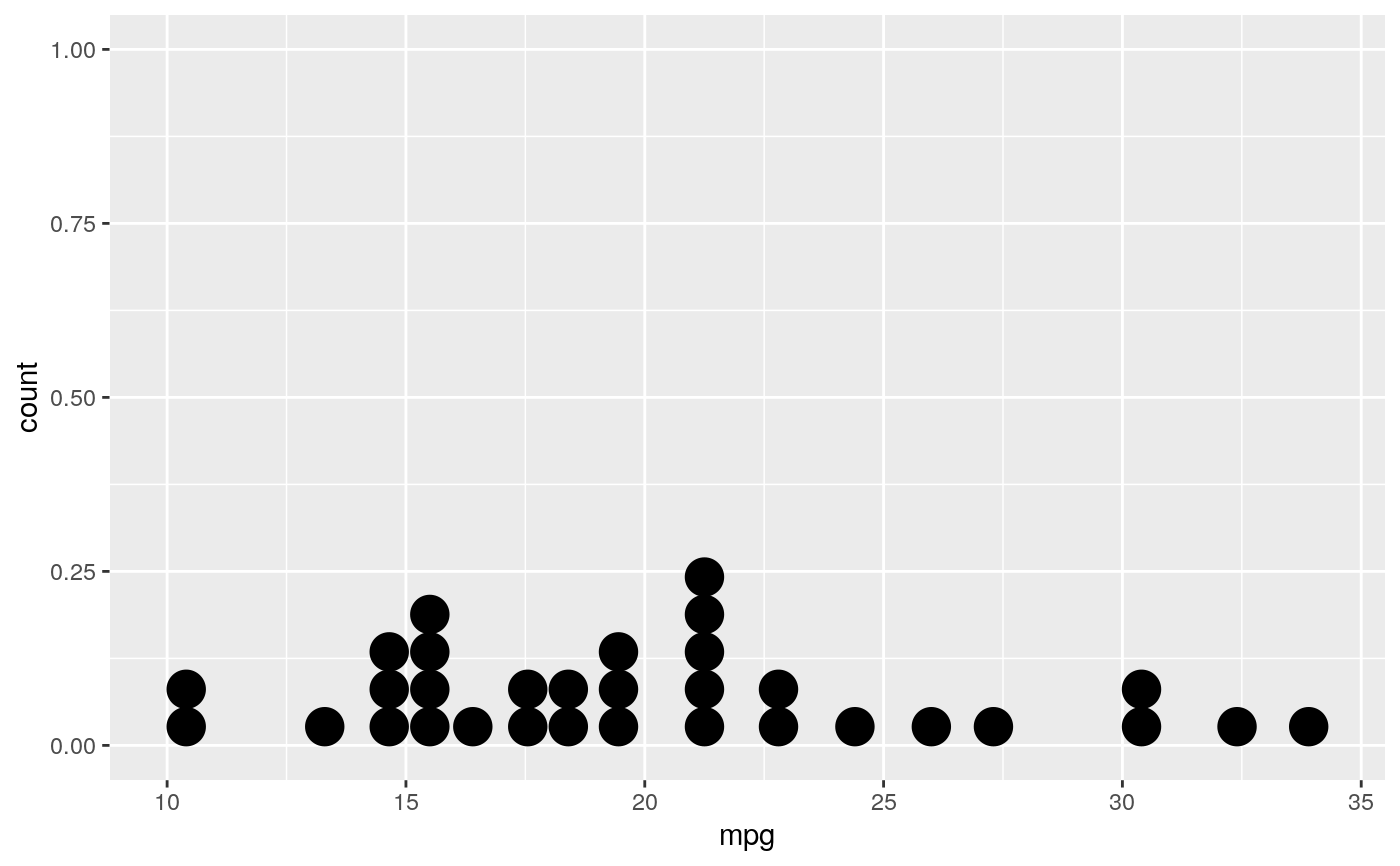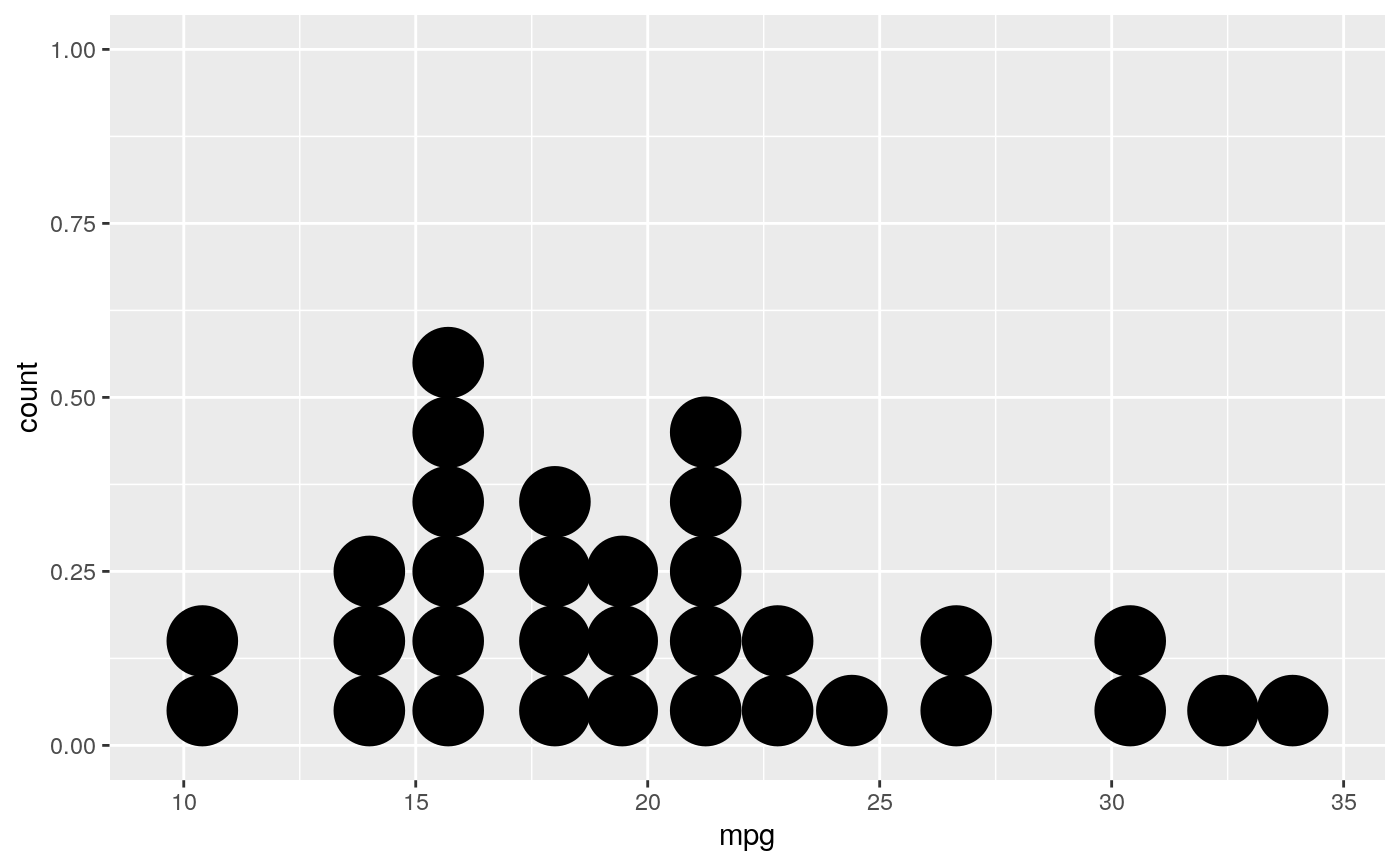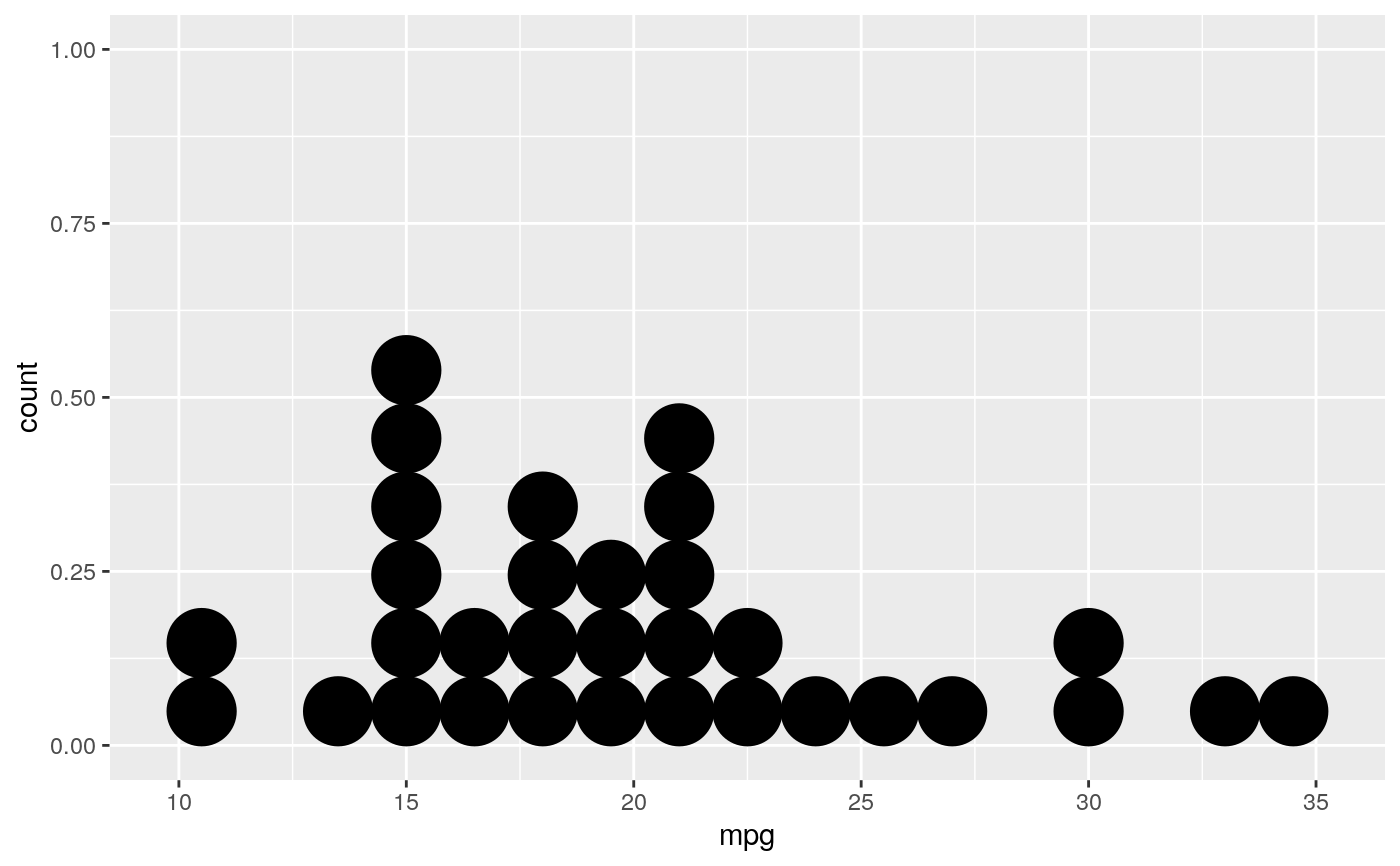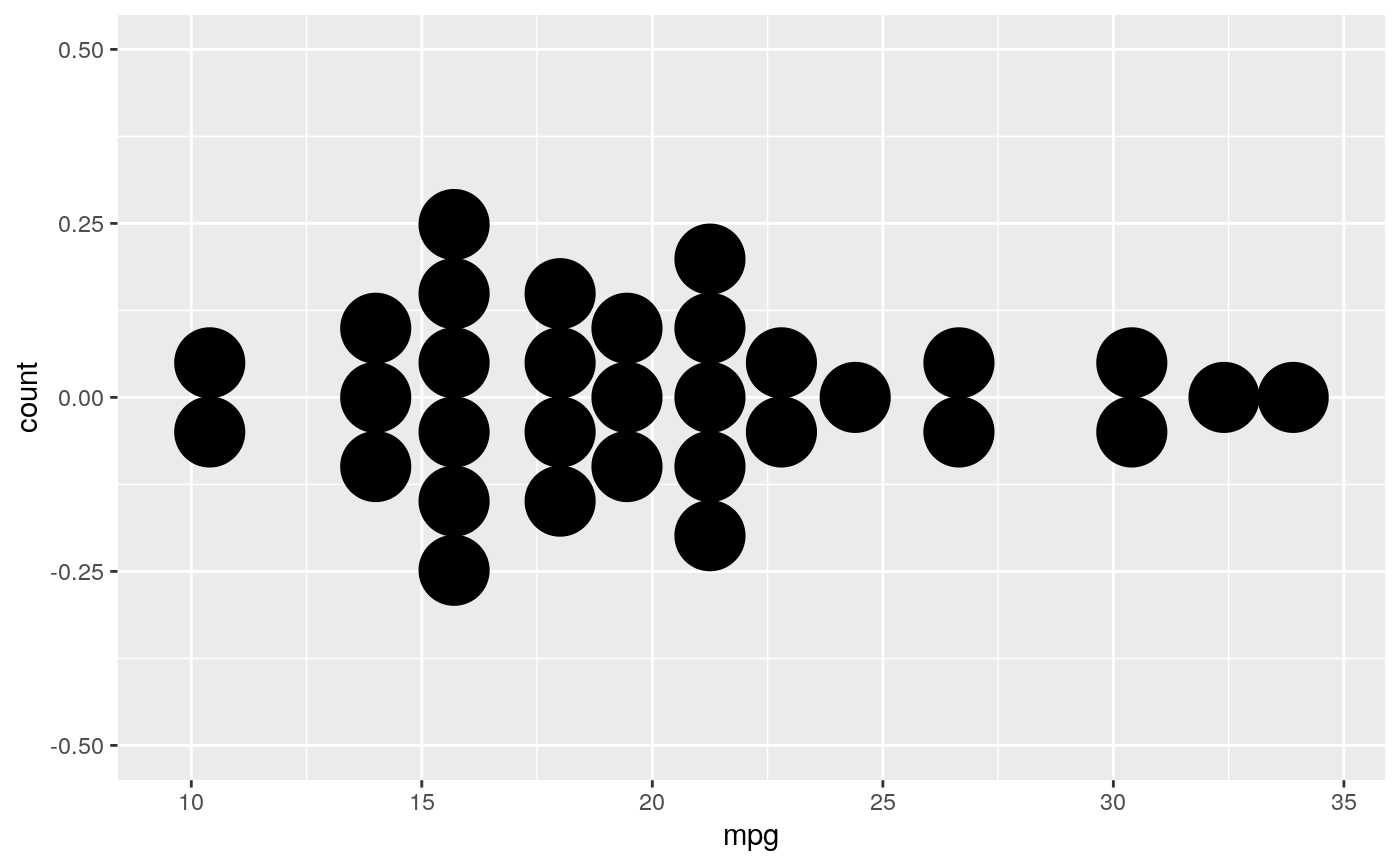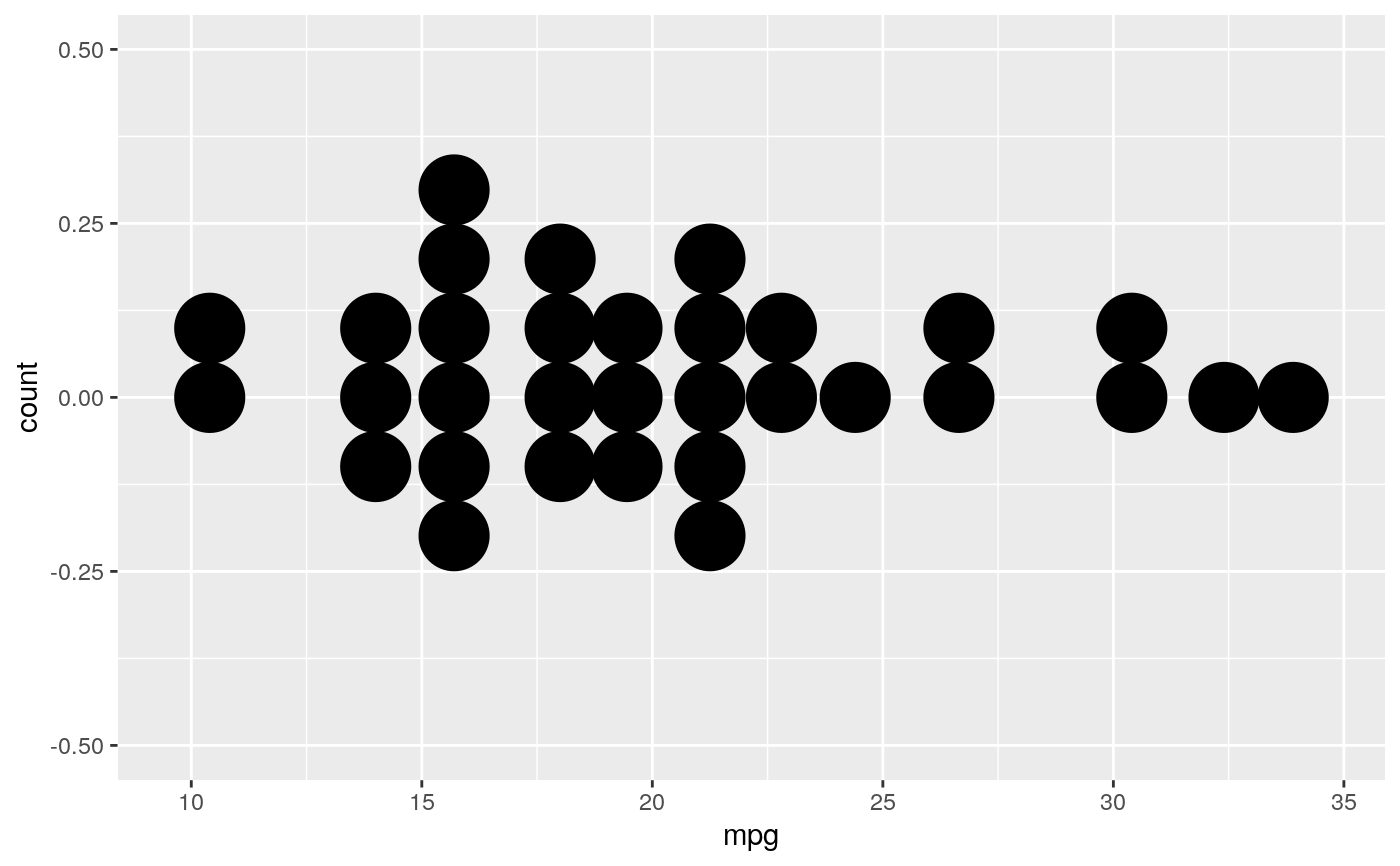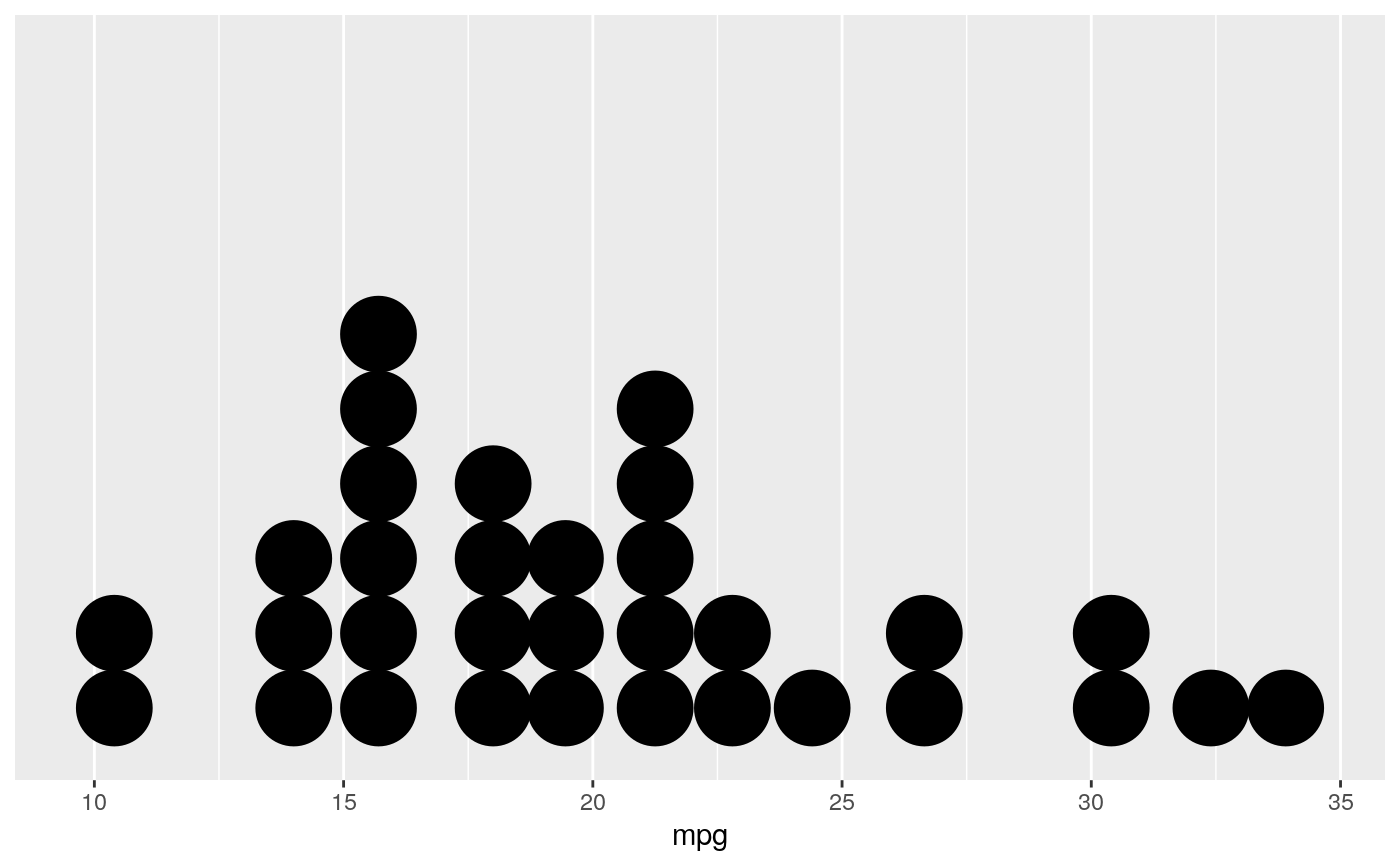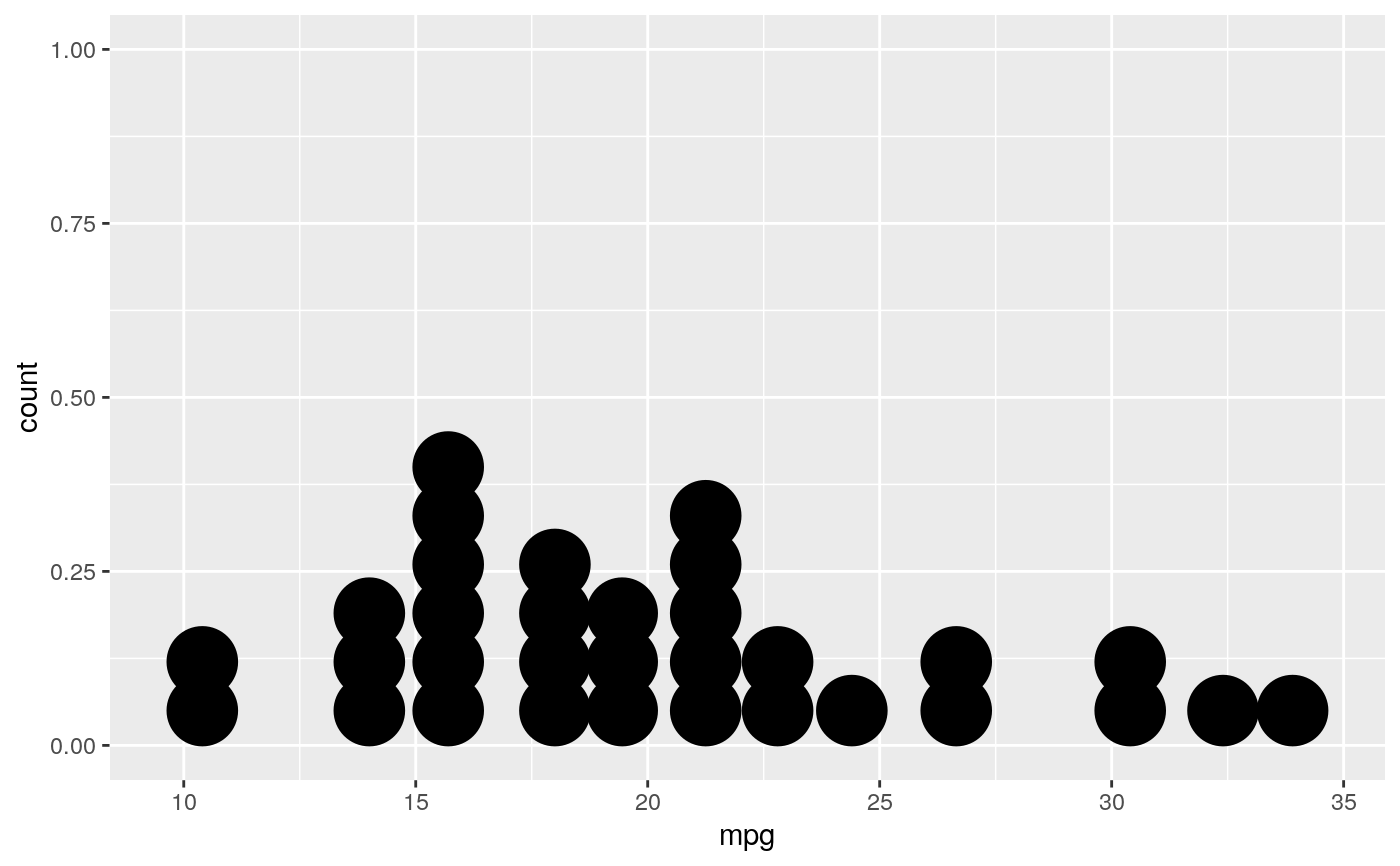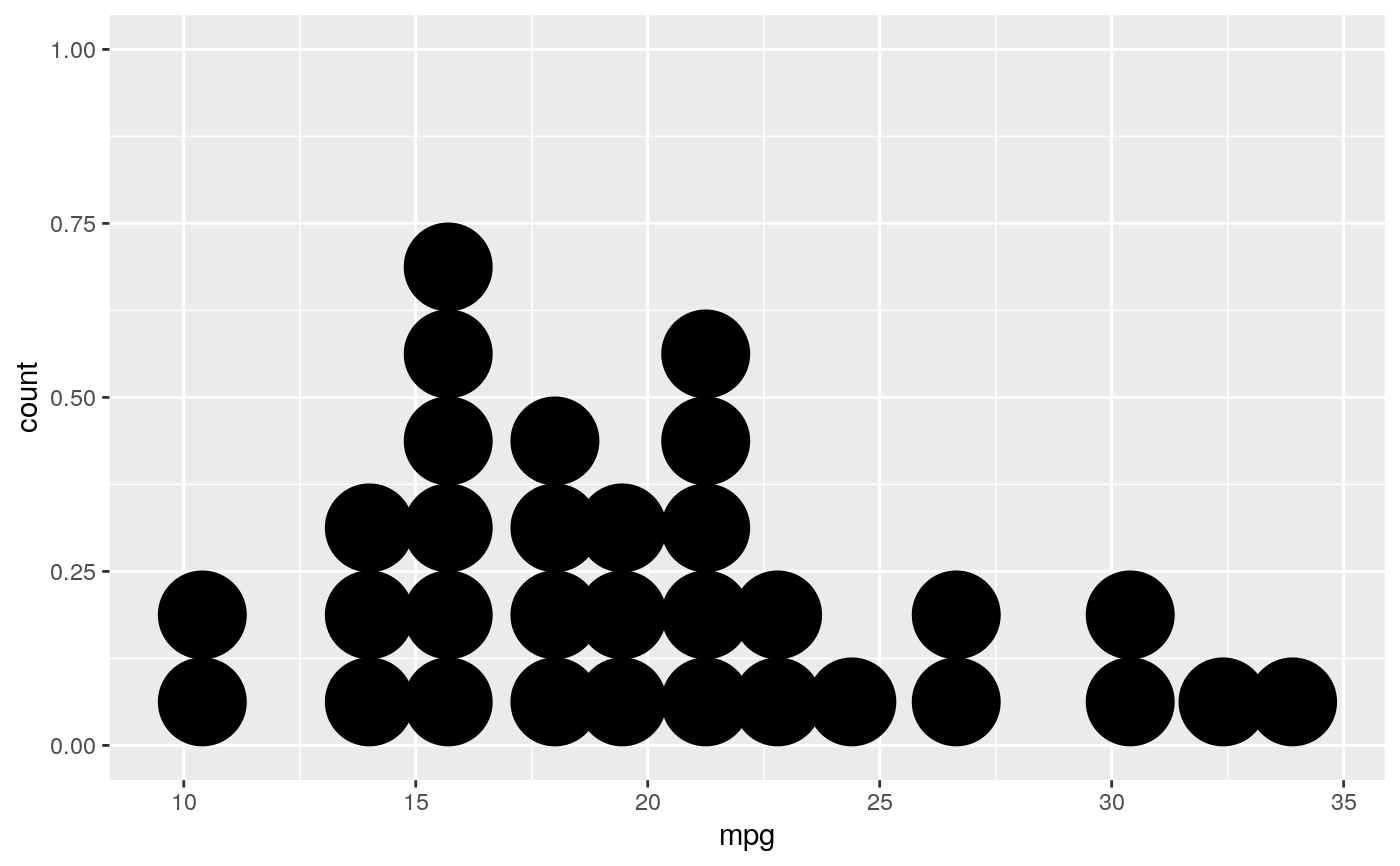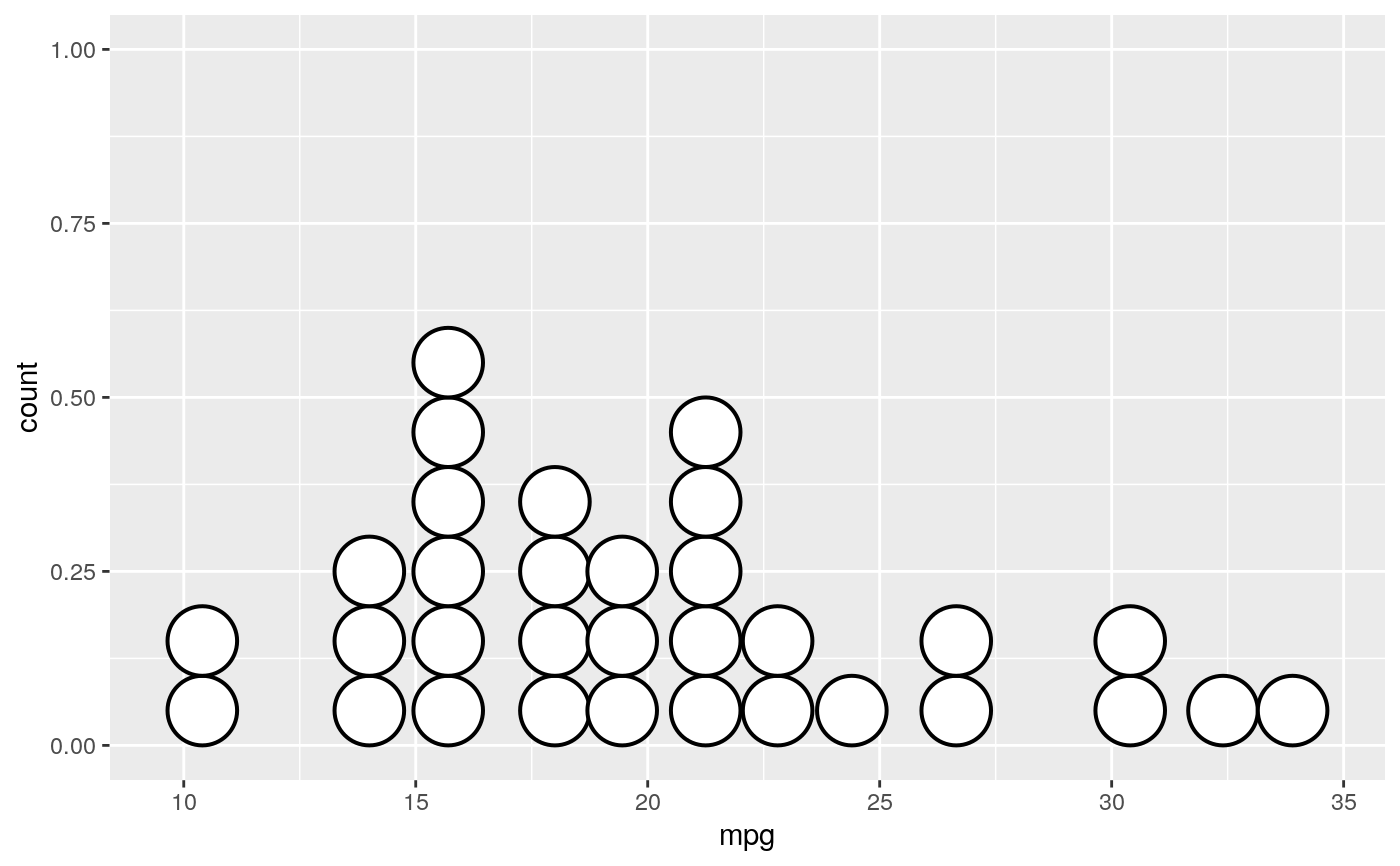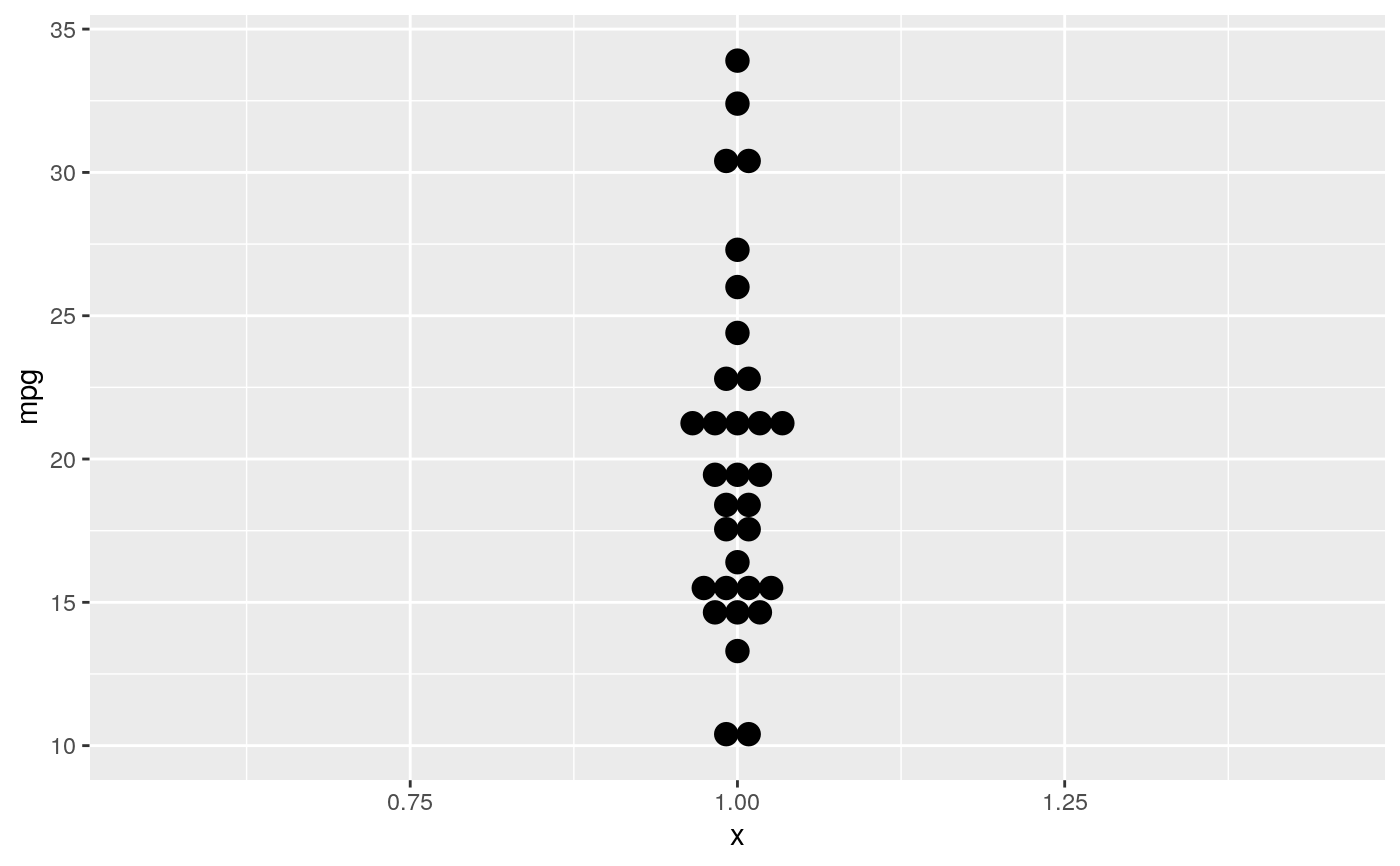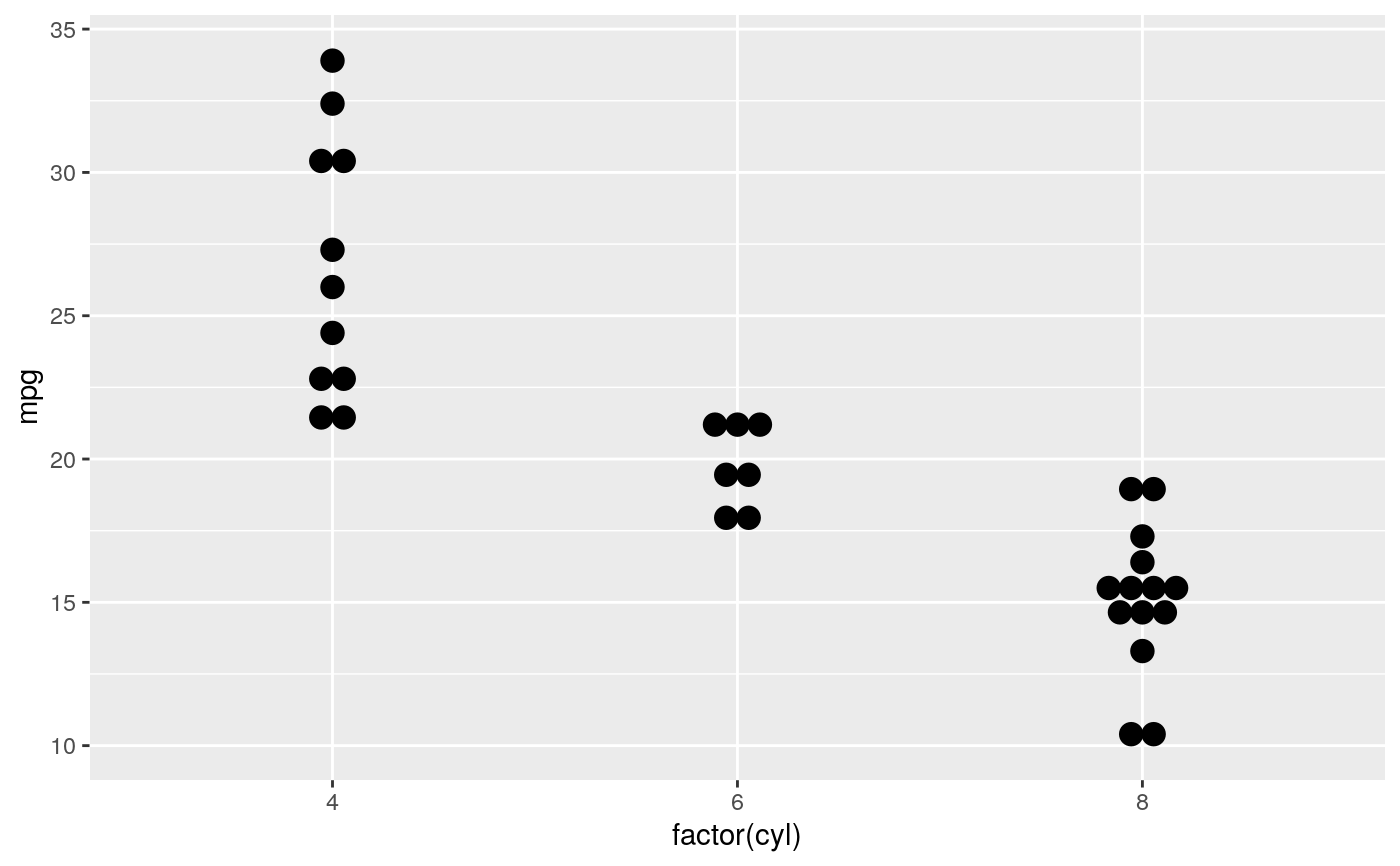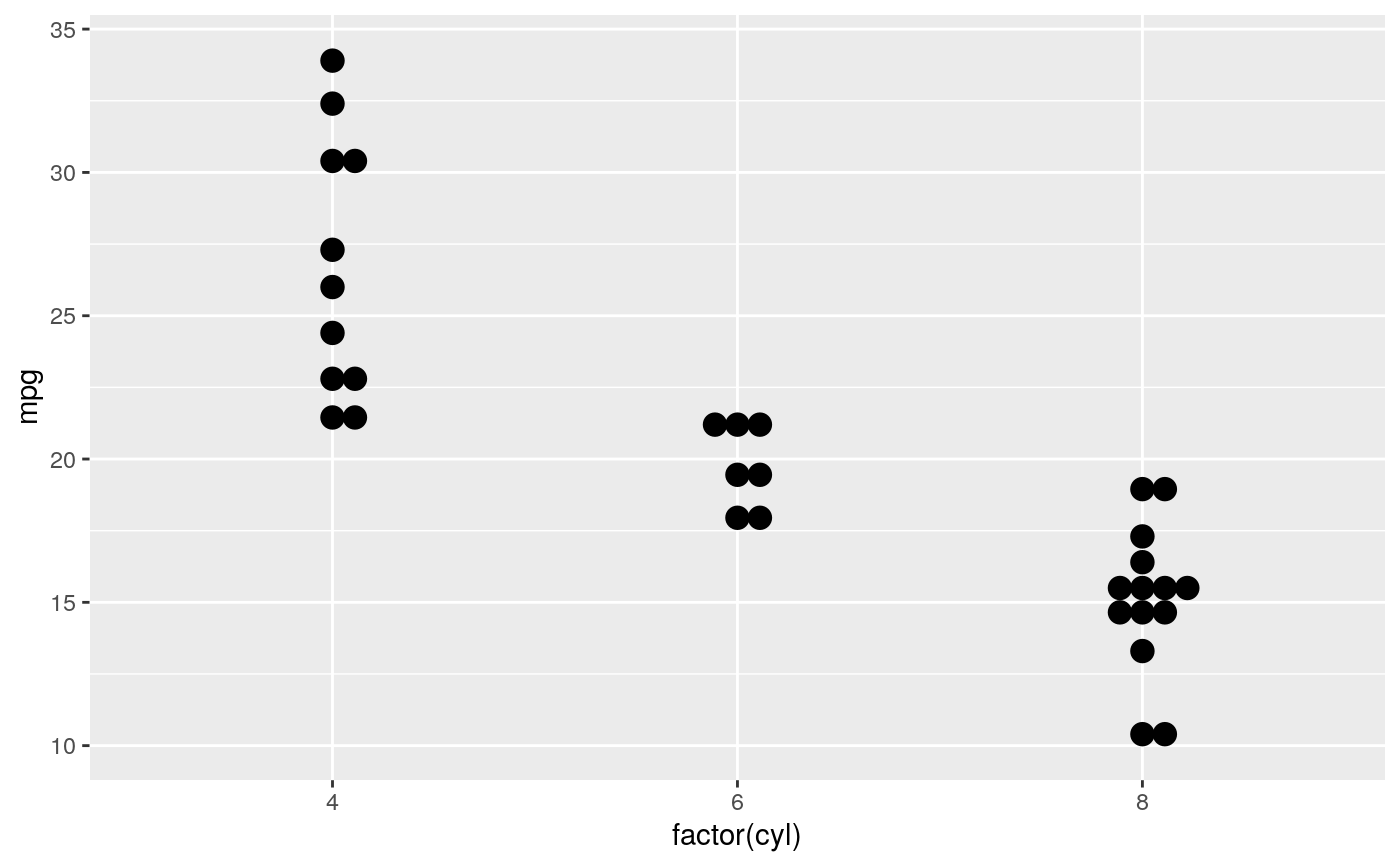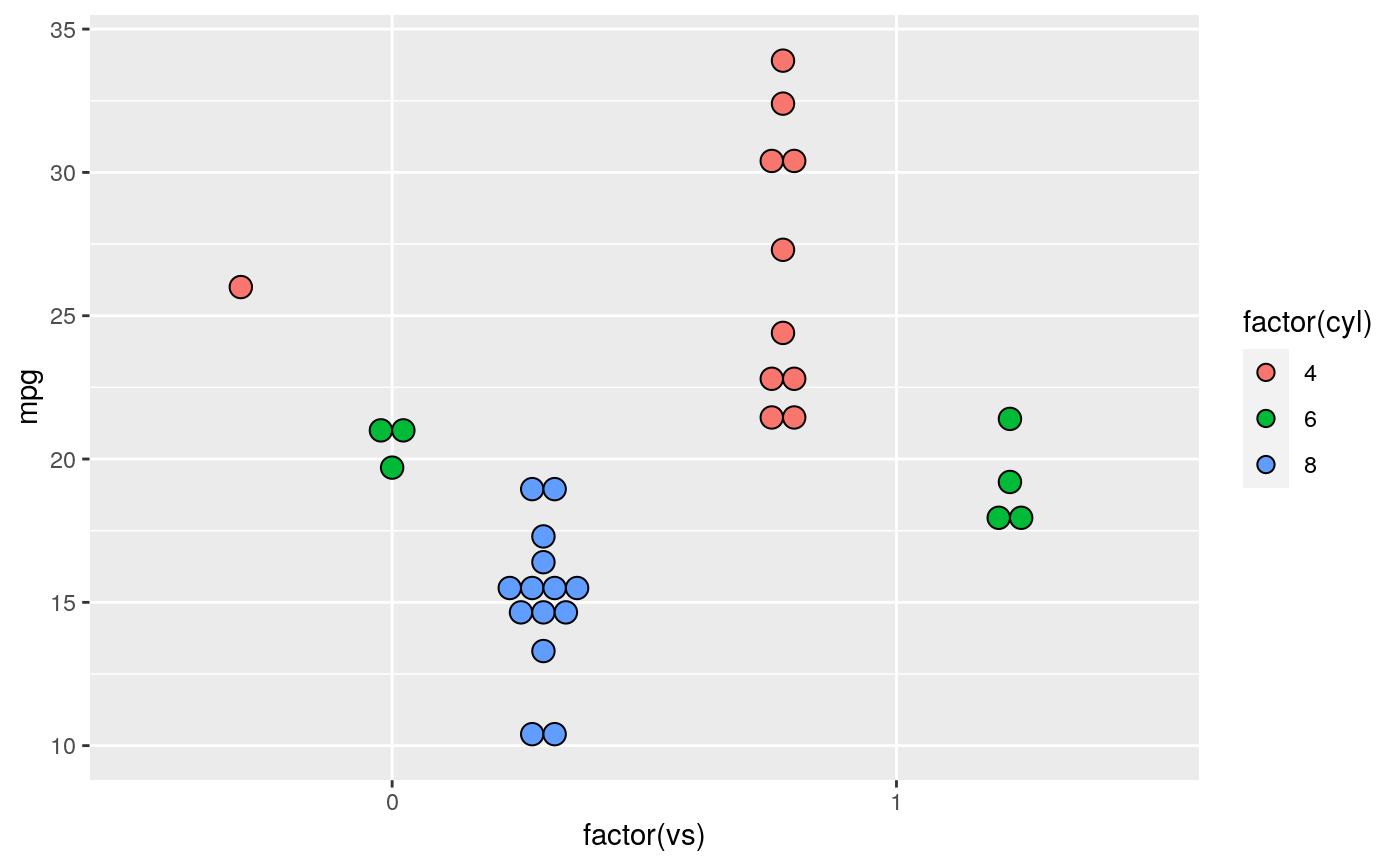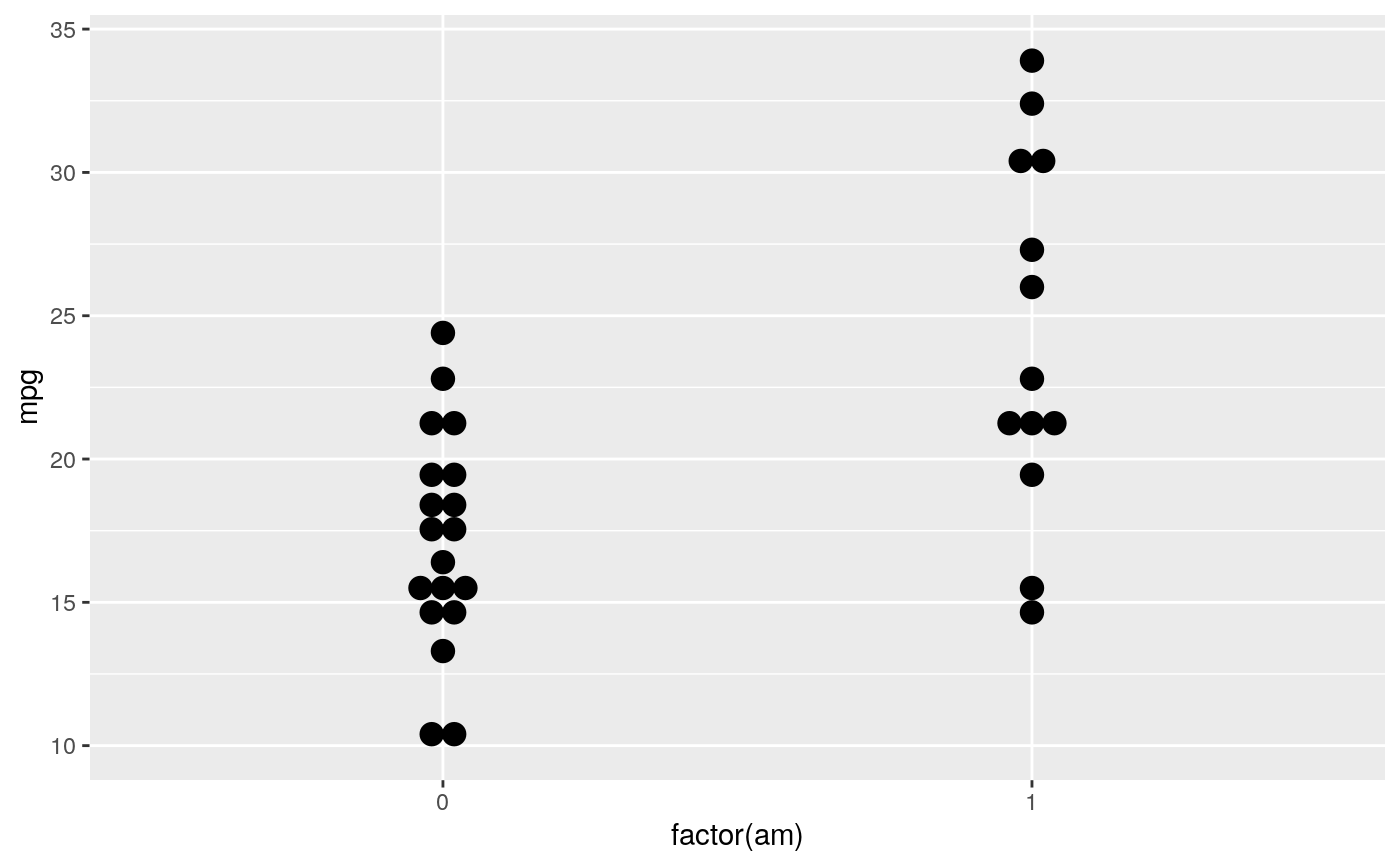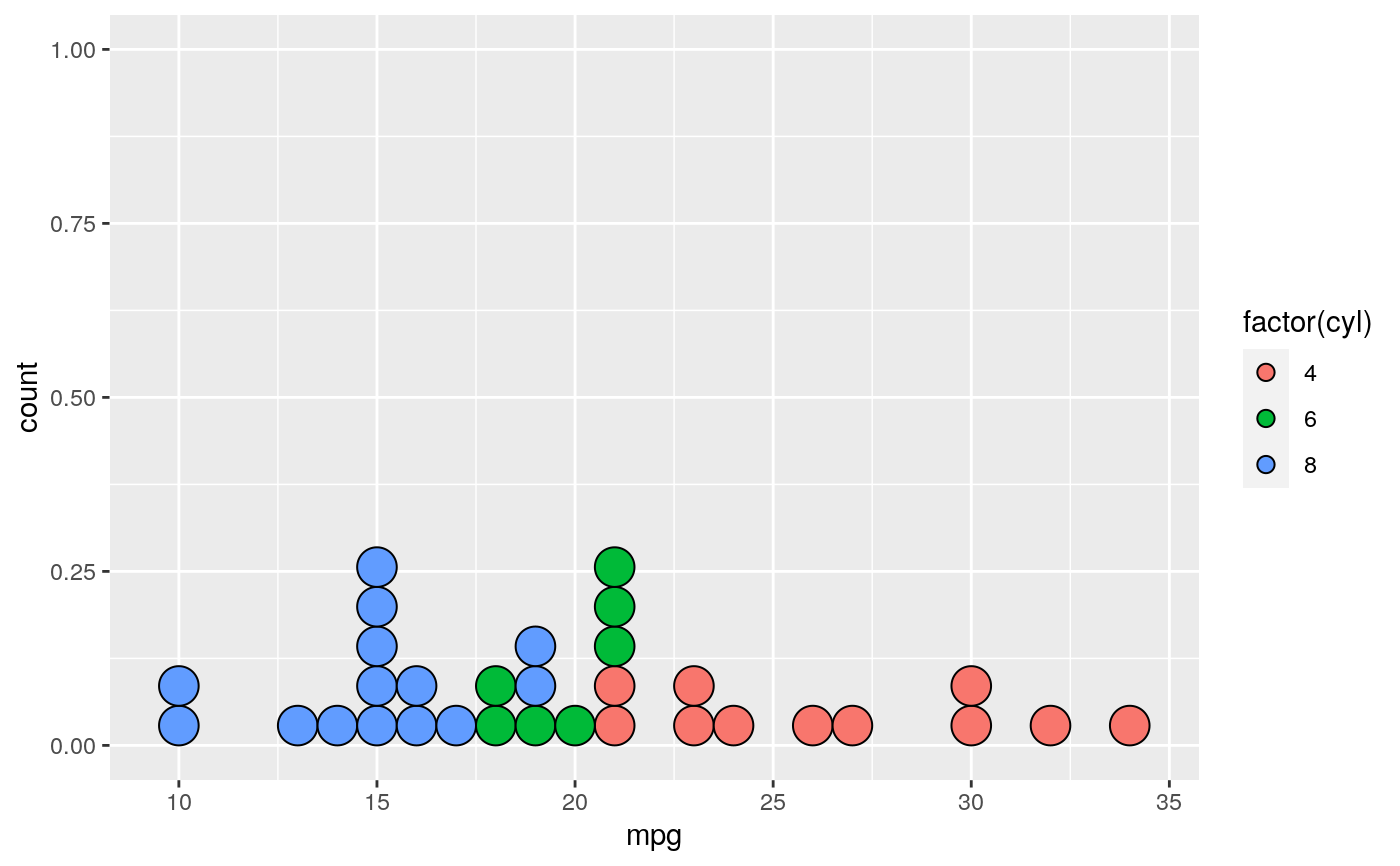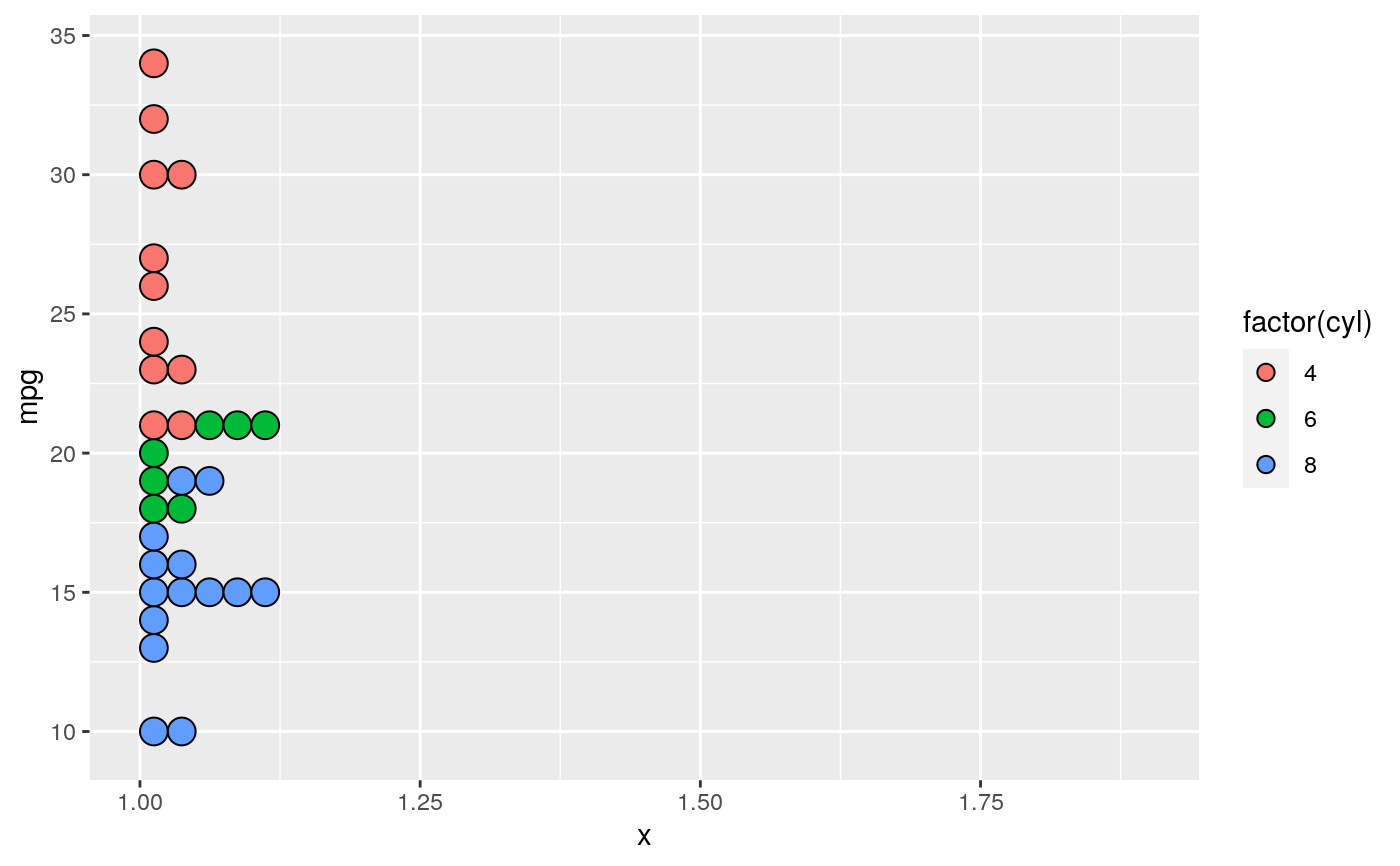In a dot plot, the width of a dot corresponds to the bin width (or maximum width, depending on the binning algorithm), and dots are stacked, with each dot representing one observation.
geom_dotplot( mapping = NULL, data = NULL, position = "identity", ..., binwidth = NULL, binaxis = "x", method = "dotdensity", binpositions = "bygroup", stackdir = "up", stackratio = 1, dotsize = 1, stackgroups = FALSE, origin = NULL, right = TRUE, width = 0.9, drop = FALSE, na.rm = FALSE, show.legend = NA, inherit.aes = TRUE )
Arguments
| mapping | Set of aesthetic mappings created by |
|---|---|
| data | The data to be displayed in this layer. There are three options: If A A |
| position | Position adjustment, either as a string, or the result of a call to a position adjustment function. |
| ... | Other arguments passed on to |
| binwidth | When |
| binaxis | The axis to bin along, "x" (default) or "y" |
| method | "dotdensity" (default) for dot-density binning, or "histodot" for fixed bin widths (like stat_bin) |
| binpositions | When |
| stackdir | which direction to stack the dots. "up" (default), "down", "center", "centerwhole" (centered, but with dots aligned) |
| stackratio | how close to stack the dots. Default is 1, where dots just touch. Use smaller values for closer, overlapping dots. |
| dotsize | The diameter of the dots relative to |
| stackgroups | should dots be stacked across groups? This has the effect
that |
| origin | When |
| right | When |
| width | When |
| drop | If TRUE, remove all bins with zero counts |
| na.rm | If |
| show.legend | logical. Should this layer be included in the legends?
|
| inherit.aes | If |
Details
There are two basic approaches: dot-density and histodot.
With dot-density binning, the bin positions are determined by the data and
binwidth, which is the maximum width of each bin. See Wilkinson
(1999) for details on the dot-density binning algorithm. With histodot
binning, the bins have fixed positions and fixed widths, much like a
histogram.
When binning along the x axis and stacking along the y axis, the numbers on y axis are not meaningful, due to technical limitations of ggplot2. You can hide the y axis, as in one of the examples, or manually scale it to match the number of dots.
Aesthetics
geom_dotplot() understands the following aesthetics (required aesthetics are in bold):
xyalphacolourfillgrouplinetypestroke
Learn more about setting these aesthetics in vignette("ggplot2-specs").
Computed variables
center of each bin, if binaxis is "x"
center of each bin, if binaxis is "x"
max width of each bin if method is "dotdensity"; width of each bin if method is "histodot"
number of points in bin
count, scaled to maximum of 1
density of points in bin, scaled to integrate to 1, if method is "histodot"
density, scaled to maximum of 1, if method is "histodot"
References
Wilkinson, L. (1999) Dot plots. The American Statistician, 53(3), 276-281.
Examples
#># Use fixed-width bins ggplot(mtcars, aes(x = mpg)) + geom_dotplot(method="histodot", binwidth = 1.5)# Some other stacking methods ggplot(mtcars, aes(x = mpg)) + geom_dotplot(binwidth = 1.5, stackdir = "center")# y axis isn't really meaningful, so hide it ggplot(mtcars, aes(x = mpg)) + geom_dotplot(binwidth = 1.5) + scale_y_continuous(NULL, breaks = NULL)# Overlap dots vertically ggplot(mtcars, aes(x = mpg)) + geom_dotplot(binwidth = 1.5, stackratio = .7)# Change dot fill colour, stroke width ggplot(mtcars, aes(x = mpg)) + geom_dotplot(binwidth = 1.5, fill = "white", stroke = 2)# \donttest{ # Examples with stacking along y axis instead of x ggplot(mtcars, aes(x = 1, y = mpg)) + geom_dotplot(binaxis = "y", stackdir = "center")#>#>ggplot(mtcars, aes(x = factor(cyl), y = mpg)) + geom_dotplot(binaxis = "y", stackdir = "centerwhole")#>ggplot(mtcars, aes(x = factor(vs), fill = factor(cyl), y = mpg)) + geom_dotplot(binaxis = "y", stackdir = "center", position = "dodge")#># binpositions="all" ensures that the bins are aligned between groups ggplot(mtcars, aes(x = factor(am), y = mpg)) + geom_dotplot(binaxis = "y", stackdir = "center", binpositions="all")#># Stacking multiple groups, with different fill ggplot(mtcars, aes(x = mpg, fill = factor(cyl))) + geom_dotplot(stackgroups = TRUE, binwidth = 1, binpositions = "all")ggplot(mtcars, aes(x = mpg, fill = factor(cyl))) + geom_dotplot(stackgroups = TRUE, binwidth = 1, method = "histodot")ggplot(mtcars, aes(x = 1, y = mpg, fill = factor(cyl))) + geom_dotplot(binaxis = "y", stackgroups = TRUE, binwidth = 1, method = "histodot")# }
